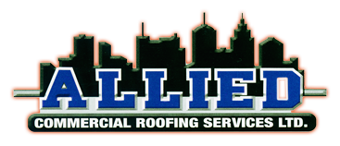
2233 East Enterprise Pkwy • Twinsburg, Ohio 44087
Frequently Asked Questions
What should a company do to look for potential roofing problems?
Several common problems to look for include: a ceiling tile that begins to dampen, masonry walls that show moisture and small puddles that start to accumulate on an interior floor. Contacting a qualified roofing specialist to perform maintenance surveys will assure that small problems do not become large, costly problems.
How often should a building's roof be inspected?
Your roofing system should be inspected twice a year. If there are heavy storms, you should call for an inspection to ensure that your roof has not been damaged.
What is the best method to inspect a building's roof?
The best method to use to inspect a building's roof is to partner with a roofing specialist. Experienced roofing professionals are trained to identify problematic areas. Experts recommend that a company should partner with a qualified roofing specialist to inspect a roof twice a year. In between inspections, a building owner can look for potential problems such as ponding and interior water spots after a storm.
How long should a building's roof last?
A life of a building's roof depends on several contributing factors including the quality of the materials, the quality of installation, and preventative maintenance to spot problems before they become large ones. Some roofs are designed for a life expectancy of 30-plus years while other roofs have a life expectancy of 10 years or less. Research proves that the number one reason why roofs do not survive their anticipated life cycles is the neglect of maintenance.
What causes a roof to wear out?
Roofs wear out due to a variety of contributing factors that may combine to affect and accelerate roof deterioration. These may include ultraviolet radiation from the sun, temperature extremes, exposure to wind, rain, ice and snow and foot traffic on the roof.
What hidden costs are associated with roof leaks?
Many costs are associated with leaks such as: Downtime for production, lost use of space, tenant complaints, slip and fall accidents and legal claims, mold and mildew, employee moral and productivity issues.
What can cause immediate problems with my roof?
• Extreme weather: Lightening, high winds, hail, drenching rains that overflow the flashing heights
• Equipment additions: Improperly added equipment or other items improperly added on the roof (items added by tenants are a very common source of roofing problems)
• Trade damage: Punctures, holes etc. caused by trades other than the roofing contractor
• Unintended Abuse: Vandalism or accidental damage…even a small hole can let in a large amount of water into the roofing system.
What “wears out” a roof?
• Forgetting About Maintenance: this is perhaps the single biggest cause of premature roof failure.
• Exposure: either long-term exposure to the elements (sun, water, freeze-thaw) or short-term exposure to damaging air pollutants and chemicals.
• Structural Movement: such as building settlement or expansion/construction not accommodated by the roofing system
• Biological Growth: Such as vegetation in areas of standing water or algae.
• Not fixing Problems Promptly: these can add up to a much shorter roof life - e.g., if a small problem is not repaired, then a large amount of insulation can be damaged.
• Change In The Use Of The Building: e.g., an increase in the interior relative humidity of a building can cause severe condensation problems within the roofing system.
